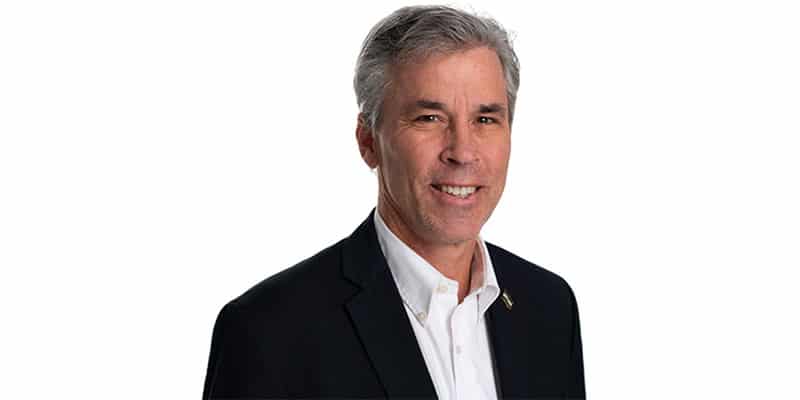5 Business Lessons Learned Hiking the Appalachian Trail

Improvisation, planning and persistence translate from the trail to the boardroom.
There are few days I will remember with more clarity than the day I bent down to gather water from a stream in the Appalachian Trail’s 100 Mile Wilderness and realized my filter was broken.
What’s more: gathering enough water to avoid dehydration would now require using a hand pump for 90 minutes a day (for eight straight days) while simultaneously trying to swat away man-eating mosquitos.
And I was out of insect repellant.
It was at that moment, just a week into a multi-month hiking adventure with my son, Erik, I realized how lessons from life in the wilderness directly translate to the many challenges I’d experienced in the business world. As a longtime sales executive for both large and small companies, I’d been in more ‘make-it-work’ situations than I could count, many of them involving limited resources and a need for speedy decision-making.
This scenario wasn’t much different, except instead of patching up sales snafus, Erik and I had to figure out how to drink clean water without getting swallowed by carnivorous insects. The solution dawned on us quickly, and for the rest of the 100 Mile Wilderness, one of us would pump water while the other used a baseball cap to swat away the bugs.
Hiking the entirety of the Appalachian Trail (AT for short) in one go (also called a ‘thru-hike’) took us many months, but by fall 2018, Erik and I reached the southern terminus of the 2,200-mile journey. We’d crossed 14 states and climbed the equivalent summiting Mount Everest more than 17 times. Finishing the hike was a bucket list item for me, and I am proud to have had that experience with my son. But now that I’m back to work, I’m continuously flooded with memories of life on the trail, and the lessons that translate into both worlds.
Here are my top five trail-to-business lessons:
Proper planning makes audacious goals achievable
After dreaming about completing the AT for 40 years, I spent six months preparing before setting foot on the trail. This included building a hike plan (a spreadsheet with daily miles, elevation change, average grade, water access, etc.), acquiring equipment and researching how other thru-hikers successfully had completed their trips.
The mere creation of a plan—even if it wasn’t followed down to the mile every day—was crucial to our success. It helped us anticipate challenges, think through how to meet those challenges and gave us confidence when surprises arose.
It’s the same in business. When pursuing ambitious goals, starting with a thoughtful plan significantly increases the likelihood of success. A plan gives your team a sense of purpose and direction. It provides a stabilizing force when adversity and challenges arise. It creates milestones and a sense of progress that encourage continued effort when the days get long and the work gets hard. Both my business and personal experiences confirm that starting with a solid plan puts you (and your team) in the best position to achieve goals and deliver in a predictable, consistent fashion.
Persist past your doubters to achieve your vision
While I was excited to finally pursue my lifelong dream, announcing my AT thru-hike was met by some skeptical reactions, wide eyes and comments like “oh, really?” The doubters had good reason; of the roughly 5,000 people who attempt AT thru-hikes each year, only 25% successfully finish.
The fact I was 55 and had recently underwent knee surgery did little to boost their confidence. Oh, and since Erik did not graduate high school until May, we had to make our thru-hike southbound or SOBO. SOBO thru hikers are less likely to succeed (only 17% make it) since they start with three of the hardest challenges on the AT. Day one involves climbing Mount Katahdin, one of the toughest climbs on the trail, and is immediately followed by eight to ten days in the 100 Mile Wilderness (the longest stretch of AT with no towns, resupply or support). That stretch is followed by the Presidentials in Southern Maine (where grades average 15 percent daily).
This meant that before we even developed our trail legs, we had to endure the worst the AT had to offer. To be honest, even I had some doubts in those early days.
It was interesting to see how those doubts changed as we progressed down the trail. I regularly posted hike updates on my LinkedIn profile and on our website. As Erik and I passed the halfway mark, we noticed more engagement on the posts. People were getting excited, starting to believe and cheering us on. Our persistence turned doubt into belief within our own minds and with those following our adventure.
Persistence is equally powerful in the business world. Often, an entrepreneur or leader has a vision that others do not yet fully embrace. With persistence, doubts are overcome and skeptics become advocates toward achieving the goal, just like it did for us on the trail. Erik and I stayed focused on our goal—finishing the entire AT—and that vision helped us persist past all doubt, self-inflicted or otherwise.
Improvisation is an underrated skill
Most startup companies launch with limited resources. Founders are forced to work with what they have until customers come on the scene. This stage is both exciting and nerve-wracking, but is helped by a little improvisation and a lot of innovation.
Lack of resources can actually be a benefit for early-stage companies. Instead of relying on teams of people, CEOs are forced to understand every aspect of their businesses—down to how best to clean the office fridge—and those learnings help them be more assured, empathic leaders.
For Erik and I, our best improv moment was the water filter incident as we worked to survive the 100 Mile Wilderness. Until that day, we had been gliding along the trail, chatting away with fellow hikers, and excitedly snapping photos. Everything felt like it was crashing down the minute our broken filter threatened to take us down the path to dehydration. Realizing we could solve the problem by working together—one person filtering, the other swatting flies—was a game changer. It built our confidence that we could overcome challenges even with the limited resources we carried on our backs.
The best outcomes are always preceded by hard work
Not every day on the AT was a struggle. Some days were easy, like when Erik and I walked through Pennsylvania. It was flat, the sky was often clear and we were able to move quickly. But thinking back on the trip, our fondest memories—the moments where we felt the most reward—happened during the toughest sections. It was on those steep mountain climbs when we had the most fun, when we had to figure things out, when we grew as hikers and as people. It turns out, the most rewarding views were always preceded by the hardest climbs.
I’ve found the same thing in my business life. The jobs where I developed and learned the most were roles I enjoyed the least (at the time). Whether hiking down the trail or working up the ladder, long-lasting rewards come from hard work and powering through.
Remain grateful for everything, even the simple things
I’ll never forget the moment Erik and I arrived at a hostel after the 100-Mile Wilderness and turned on a sink tap. Water at the ready! Genius! This, of course, had never been my attitude before pumping water by hand for eight straight days, but it taught me something. Even on the roughest days, there are always things to be grateful for. Soon after, I vowed to start every morning by listing 10 things for which I was grateful.
This practice changed the remainder of the hike for us, and we stopped taking things for granted. A powerful example occurred on a long rainy stretch through Pennsylvania. We got up on another rainy morning with 22 miles that day. Instead of griping, I acknowledged the rain’s ability to bring cooler temperatures and keep the bugs and snakes away from us. Even in adversity there are blessings.
This principle translates directly to business (and to life) because everyone has bad days. I believe it is most important to express gratitude on those days. By doing so, it lifts both your spirits and that of your team’s, and reminds you there will be better days. As leaders, we set the tone for our teams, and an attitude of gratitude is extremely contagious.
Thru-hiking the AT was harder than I expected going in and much more rewarding than I expected coming out. I will forever savor the powerful bonding and memories with my son and the satisfaction of achieving an ambitious lifelong goal. I was surprised by many parallels between hiking the AT and business experiences, and now apply those lessons learned as I pursue my next adventure.
I am happy to share some of those lessons that readily apply to business; and, if you’re planning your own AT adventure, remember to check your water filter before you hit the 100 Mile Wilderness.
Add CEOWORLD magazine to your Google News feed.
Follow CEOWORLD magazine headlines on: Google News, LinkedIn, Twitter, and Facebook.
This report/news/ranking/statistics has been prepared only for general guidance on matters of interest and does not constitute professional advice. You should not act upon the information contained in this publication without obtaining specific professional advice. No representation or warranty (express or implied) is given as to the accuracy or completeness of the information contained in this publication, and, to the extent permitted by law, CEOWORLD magazine does not accept or assume any liability, responsibility or duty of care for any consequences of you or anyone else acting, or refraining to act, in reliance on the information contained in this publication or for any decision based on it.
Copyright 2024 The CEOWORLD magazine. All rights reserved. This material (and any extract from it) must not be copied, redistributed or placed on any website, without CEOWORLD magazine' prior written consent. For media queries, please contact: info@ceoworld.biz
SUBSCRIBE NEWSLETTER








